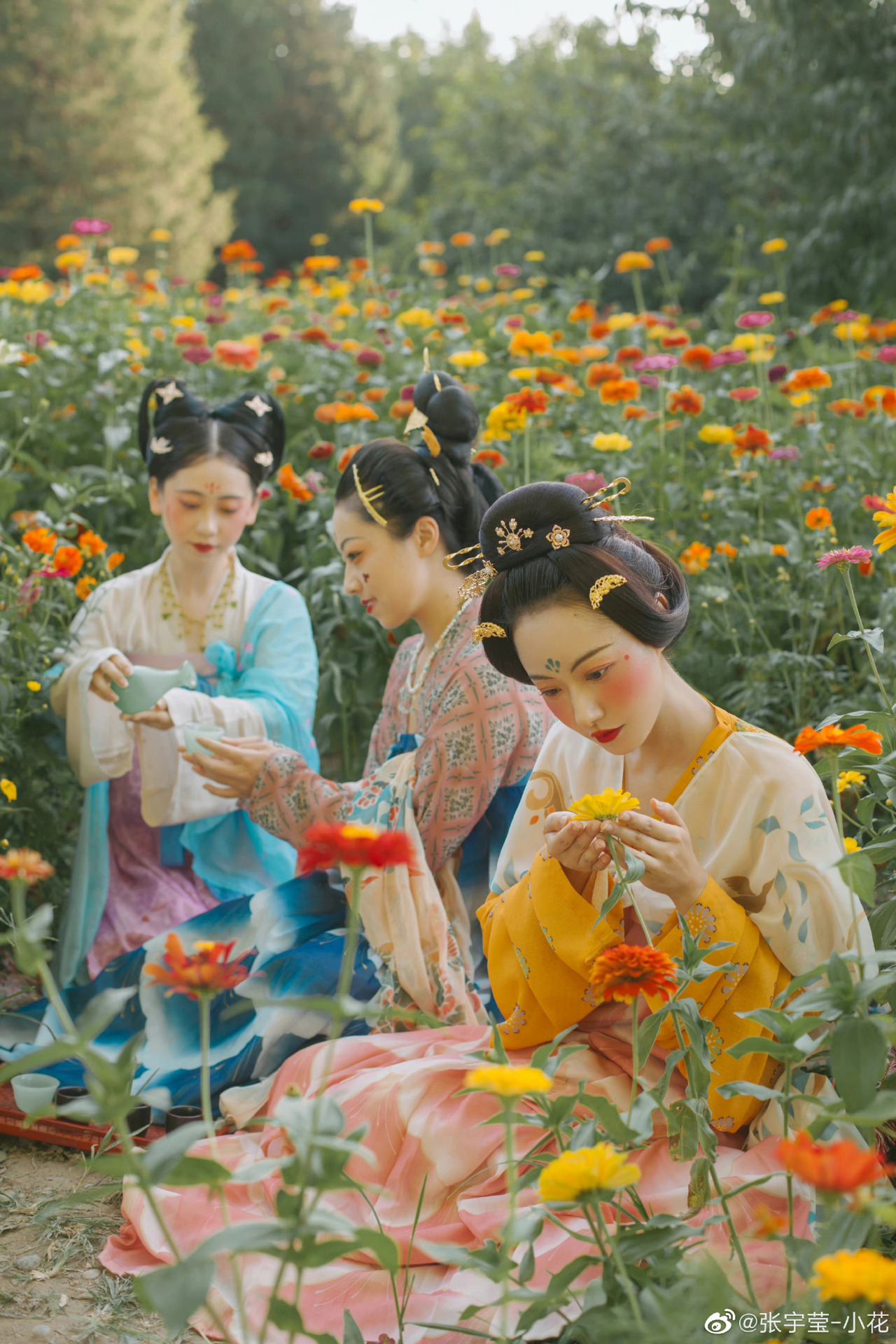Tang Dynasty Noblewoman 唐代贵妇

Music: Flower/ Hana
Reenactor: 张宇莹-小花
Tang dynasty noblewoman (with friends) dressed in intricately tie-dyed (zhá rǎn/扎染) robes. Popular motifs included repeating floral medallion prints. During the Tang the vibrant and highly resistant tie-dyed dresses were sign of status because they were very labor intensive and costly to make.
Tang dynasty at its height during the reign of the Xuanzong Emperor (the High Tang period) before the calamitous An Lushan Rebellion.
Often vibrant colors were favored and the forms of the flower medallion tuán huā 团花 "flower block/ flower medalion" shapes ranged from intricate and refined to cloudy floral fields of color (as shown here in the lady's lower skirt which mimicked the impression of large pink blossoms.)
Like the idyll of a youngster's folly-filled spring, the gaudy tie-dye patterns represented a high watermark of extravagance. And later- with the hindsight of the calamities and fall of the Tang: it was seen by later eras as a sign of frivolity and over-indulgence. After restabilizing the realm after nearly 7 decades of civil war and chaos which ended the Tang, the succeeding conservative and frugal minded Song dynasty tried to prohibit these ostentatious dresses.
Eventually the tie-dyed dresses began to disappear while some pockets still remained which had far more subdued patterns. Though banished~ it is safe to say that just like the halcyon innocent spring of youth, it still remains in a cherished place that is inextricable from the better days of Tang. There's really nothing quite like the freshness of one's youth.
Music: Spring Equinox
Thank you to my Patrons who has contributed $10 and above: You made this happen!
➢ ☯ MK Celahir
➢ ☯ Muramasa
➢ ☯ Thomas Vieira
➢ ☯ Vincent Ho (FerrumFlos1st)
➢ ☯ BurenErdene Altankhuyag
➢ ☯ Stephen D Rynerson
➢ ☯ Michael Lam
➢ ☯ Peter Hellman
➢ ☯ SunB
.png)


1.jpg)


.jpg)
.jpg)
.jpg)










Comments
In many similar circumstances where the ruling elite came from different ethnicities, there is always an underlying racial tension that the ruling dynasty worked hard to overcome and eliminate. I am thinking of Norman England, late Czarist Russia, Timurid Persia, even later Qing China. In Norman England the Anglo-Saxons were completely purged by the Norman conquerors and lingers even today with the English 'class system', ... the Czars imported an entire foreign aristocracy from Europe to displace the ancient Boyars, ... the Timurids of course were never able to reconcile the Turco-Mongol military elite and Persian civilian leaderships. And the Han never reconciled themselves to Manchu rule, always wanting to overthrow it.
I wonder what the T'ang did to meld their ruling elite together despite Han and Xianbei animosity.